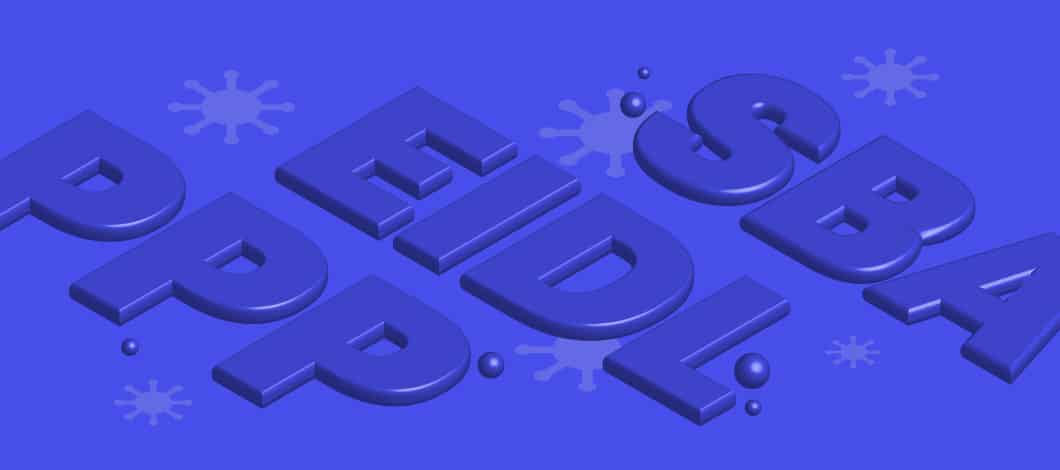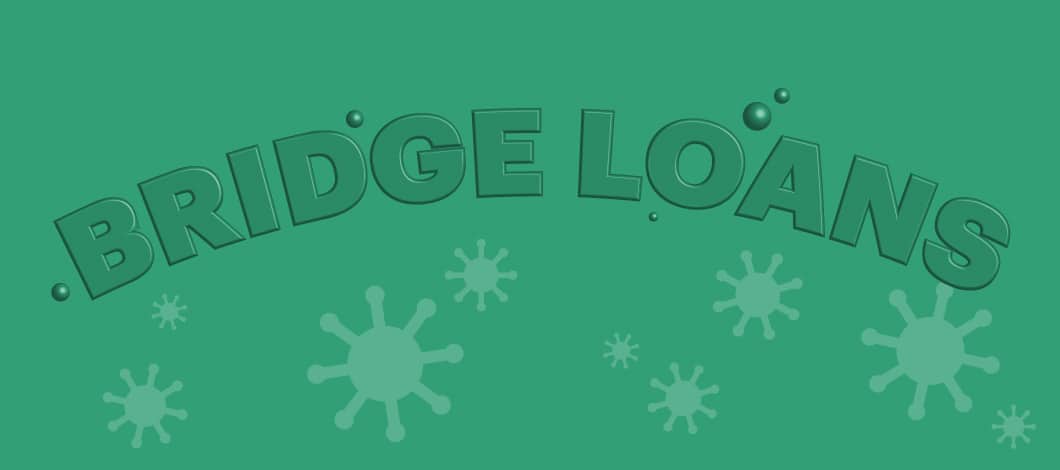Small Business Administration (SBA) grants and loans are available to help small business owners impacted by COVID-19.
Find out if you qualify. We’ll cover SBA disaster grant programs, paycheck protection programs and other pandemic relief programs, as well as other financing options that can help you weather the economic effect of COVID-19.
Economic Injury Disaster Loan Program and Targeted EIDL Advances
The Coronavirus Aid, Relief and Economic Security (CARES) Act, enacted in March 2020, introduced provisions extending the Economic Injury Disaster Loan (EIDL) program to relieve businesses affected by the COVID-19 pandemic.
These measures included both EIDL loans and associated SBA EIDL grant awards known as EIDL Advances. After multiple rounds of closing and reopening, these EIDL COVID relief programs once again opened following the passage of the Consolidated Appropriations Act update to the CARES Act in December 2020.
EIDL Advances
The EIDL Advances program was an SBA grant program that worked in conjunction with applications for COVID-19 EIDL loans. EIDL loans are long-term loans of up to $2 million with low-interest rates and repayment schedules of up to 30 years. Initially, small businesses that applied for COVID-19 EIDL loans were eligible to apply for EIDL Advances, representing advances on loan funds to be deducted from total loan amounts.
EIDL Advances were available in amounts of $1,000 per employee, up to $10,000. This SBA grant money could be received even without qualifying for EIDL loans, and didn’t need to be repaid. Amounts awarded under EIDL loans, including EIDL Advances, reduced amounts available to applicants for another CARES Act relief program, Paycheck Protection Program (PPP) loans. The original EIDL Advances program concluded after its initial funding was spent.
Targeted EIDL Advances
Under the updated version of the COVID-19 EIDL program, small businesses can again apply for EIDL loans through Dec. 31, 2021, and government SBA grants called Targeted EIDL Advances are available to some small businesses from low-income communities that previously applied for EIDL Advances. Targeted EIDL Advances are available to:
- Previous applicants for EIDL Advances from low-income communities who received less than $10,000
- Previous applicants for EIDL loans who didn’t receive any funds because of depletion of available funding
Since Targeted EIDL Advances are only available to businesses that previously applied for EIDL relief, you don’t need to submit a new application to apply for SBA grant money under this program. Using email, the SBA will reach out to qualifying EIDL program participants with instructions to determine eligibility and submit documentation. Contact will be made through official government email accounts with an sba.gov ending. The SBA warns not to send sensitive data via email to any address which does not end in sba.gov.
First, the SBA will contact previous EIDL Advance recipients who received less than $10,000. To qualify, applicants must meet a couple main criteria:
- You must be located in a low-income community as defined by Section 45D(e) of the Internal Revenue Code
- You must be able to document a 30% loss in gross monthly revenue during any 8-week period beginning March 2, 2020
Next, the SBA will contact small business owners who applied for EIDL relief by Dec. 27, 2020, but didn’t receive an EIDL Advance because of lack of available funding. To qualify, applicants in this category must meet the above criteria as well as an additional cap on number of employees:
- You must have no more than 300 employees.
Businesses normally eligible for EIDL relief are generally eligible for Targeted EIDL Advances. This includes sole proprietors, independent contractors and private nonprofits. Agricultural firms aren’t eligible for EIDL Advances, but can still apply for EIDL loans if they meet qualifying criteria.

PPP Loans
In addition to the EIDL program, the SBA provides a number of other coronavirus relief options. One is the PPP, an extension of the SBA’s 7(a) loan program designed to help businesses cover the cost of keeping employees working during the pandemic.
First Draw PPP Loans
Reopened Jan. 11, 2021, the PPP program includes 2 types of loans. First Draw PPP Loans provide up to $10 million in low-interest, forgivable loans for businesses suffering from the pandemic. The loans carry a 1% interest rate and come with the option of either applying for loan forgiveness or deferring payment for 10 months after a selected covered period of either 8 or 24 weeks. PPP First Draw Loans are open to:
- Sole proprietors, independent contractors and self-employed business owners
- Any small business concern which meets size standards set by the SBA
- Any business, 501(c)(3) nonprofit organization, 501(c)(19) veterans organization, or tribal business concern (defined by Section 31(b)(2)(C) of the Small Business Act) which has the greater of 500 employees or the SBA-defined industry size standard
- Any business with a North American Industry Classification System (NAICS) code which begins with 72, (Accommodations and Food Services) operates at multiple physical locations and employs fewer than 500 per location
Existing PPP borrowers who did not receive loan forgiveness by Dec. 31, 2020, can reapply for a First Draw PPP Loan if they previously returned some of their funds. Under certain conditions, existing borrowers can modify the amount of their original loan if they didn’t accept the full amount they were eligible for. New first Draw PPP Loan applications are being accepted through March 31, 2021.
Second Draw PPP Loans
Second Draw PPP Loans are smaller loans open to previous PPP loan recipients who meet certain conditions. They have limits of $2 million, with caps of 2.5 times monthly payroll costs for most borrowers and 3.5 times for Accommodations and Food Services providers. Terms are generally similar to First Draw PPP loans.
To qualify for Second Draw PPP Loans, applicants must meet certain conditions:
- You have previously received a First Draw PPP Loan and have spent or will spend the full amount only for authorized purposes
- You have 300 employees or less
- You can document a revenue loss of 25% in gross receipts between comparable quarters in 2019 and 2020
Second Draw PPP Loans are currently available through March 31, 2021.
Shuttered Venue Operators (SVO) Grants
SVO grants were established on Dec. 27, 2020 to help businesses in certain industries dependent on live attendees, such as:
- Live venue operators and promoters
- Theatrical producers
- Live performing arts organization operators
- Movie theaters
- Museums, aquariums and zoos
- Talent agents
- Subsidiaries of businesses that meet other eligibility requirements
SVO grant amounts are limited to $10 million, with caps varying depending on whether a business was operating on Jan. 1, 2019:
- For businesses operating by Jan. 1, 2019, amounts are capped at the lesser of $10 million or 45% of 2019 gross earned revenue
- For businesses that began operation after Jan. 1, 2019, amounts are capped at the lesser of $10 million or 6 times the average monthly gross revenue for each full month of operation in 2019
To be eligible, applicants must have been in operation as of Feb. 29, 2020, and must not have received a PPP loan on or after Dec. 27, 2020.
The SBA is still in the process of setting up the SVO grant program and isn’t yet accepting applications. Keep checking for more details as they become available. We’ll add periodic updates to our blog to help keep you posted.

SBA Express Bridge Loans
Predating the pandemic, the SBA Express Bridge Loan program is part of the SBA Express Loan program, designed to provide accelerated access to financing. Standard SBA Express Loans are available in amounts up to $350,000, with application response turnaround within 36 hours. SBA Express Bridge Loans allow borrowers with existing relationships to SBA Express lenders to access up to $25,000 quickly.
SBA Express Bridge Loans can be extended as term loans, or they can be used to provide short-term funds while applying for any type of disaster loan, including such as an EIDL loan. When used to supplement a disaster loan, SBA Express Bridge Loans are repaid in full or in part from disaster loan funds.
SBA Debt Relief
As part of its coronavirus relief efforts, the SBA is providing financial assistance in the form of debt relief to borrowers who are paying off certain types of loans. These include:
- 7(a) loans, SBA-guaranteed loans which provide a limit of $5 million to help small businesses obtain financing
- 504 loans, which provide up to $5 million in long-term, fixed-rate financing for major fixed assets which promote business growth and job creation
- Microloans, which extend small businesses and certain not-for-profit child care centers up to $50,000 to start up and expand
- Home and business disaster loans, low-interest loans to help homeowners and small businesses recover from declared disasters
For all 7(a) loans, 504 loans, and microloans in regular servicing status, as well as for any new loans in these categories taken out before Sept. 27, 2020, the SBA will pay 6 months of principal, interest and any associated fees. The SBA is handling this automatically and is contacting lenders to advise them not to collect during the covered period. This is being handled differently for loans in different deferment status:
- For loans not on deferment, the SBA will initiate payment with the next payment due and will make 6 monthly payments
- For loans on deferment, the SBA will begin making payments with the first bill due after determent and will continue payments for 6 months
- For loans made after March 27, 2020, and full dispersed before Sept. 27, 2020, the SBA will begin payments with the first payment due and will make 6 monthly payments
For SBA disaster loans that were in regular servicing status on March 1, 2020, the SBA is providing automatic deferments through March 31, 2021. Monthly payment notices will continue to go out noting that payments are deferred and no payments are due. This won’t automatically cancel any Preauthorized Debit (PAD) or recurring payment arrangements, and these will have to be canceled manually by the borrower and restarted manually after deferment is over. Interest will continue to accrue during the deferment period. Borrowers have the option of continuing to make payments.
Other SBA Grants and Loans
In addition to financing options specifically geared toward pandemic relief, the SBA offers a variety of other grants and loans which can provide financing for small business owners. These include:
- Grants for small businesses involved in scientific research and development through the Small Business Innovation Research (SBIR) and Small Business Technology Transfer (STTR) programs
- Grants for export development through the State Trade Expansion Program (STEP)
- Grants to community organizations to promote entrepreneurship through SBA associated awards
- 7(a) loans for real estate, short-term and long-term working capital, debt refinancing and purchases of furniture, fixtures and supplies
- 504 loans for purchasing or repairing real estate, equipment and other assets
- Microloans for business start-up and expansion
Depending on your situation, some of these options may provide an alternative to pandemic relief programs.
Other Financing Resources
SBA loans and grants are designed primarily for businesses that lack other financing resources. Even if you don’t qualify for the above SBA grants or loans, you may still be eligible for other forms of small business financing. Other financing options include:
- Working capital loans
- Business term loans
- Short-term loans
- Business lines of credit
- Accounts receivable financing
- Merchant cash advances
To find out which of these forms of financing you may qualify for, take 2 minutes to fill out our online application and we’ll help you determine which options are right for you.










